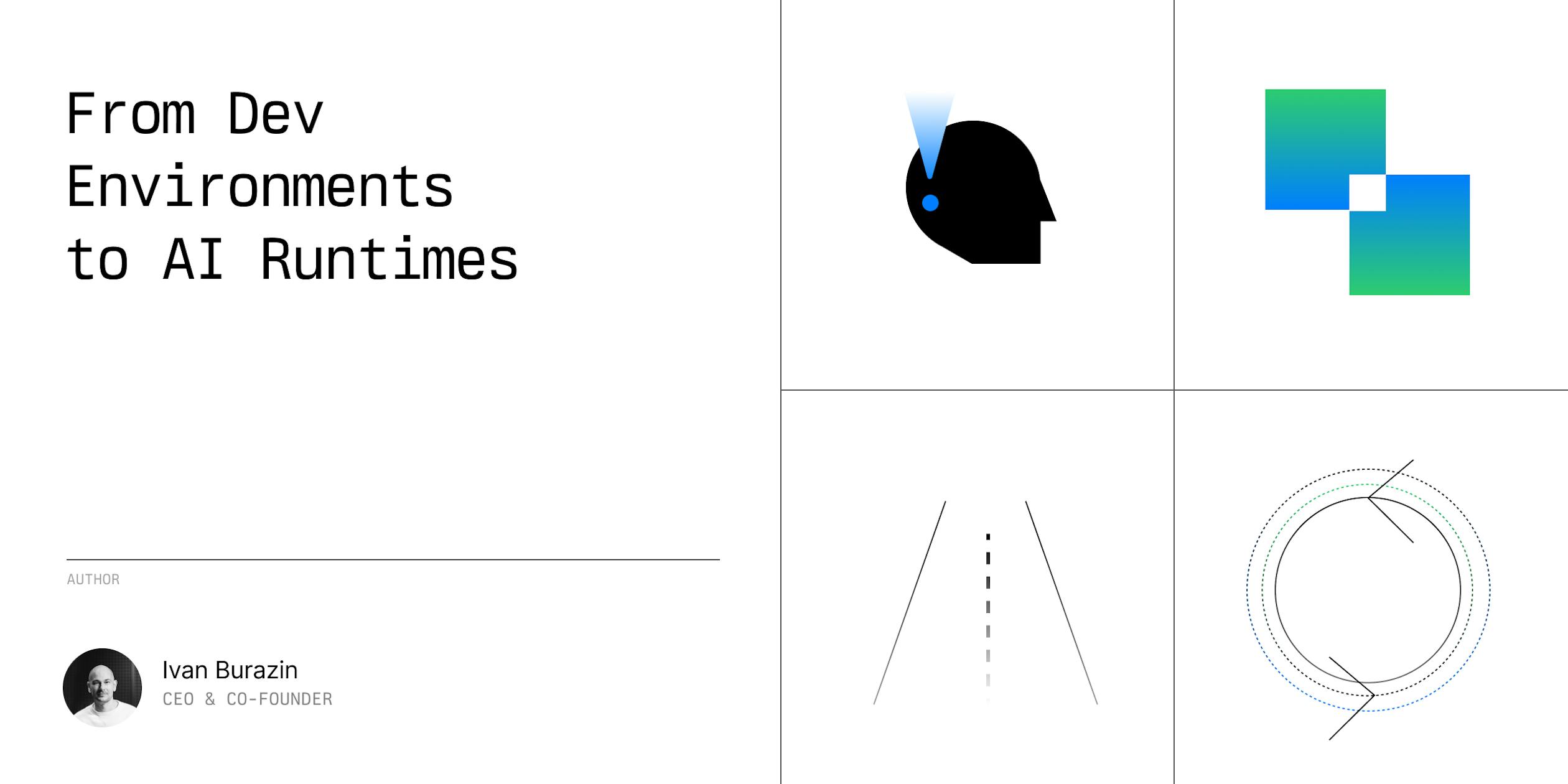At the 2025 AI Engineer Summit in New York City, OpenAI redefined AI agents with a critical insight: agents aren't just models and prompts, they require a dedicated runtime with a dynamic lifecycle to function effectively.
Recent announcements from Groq and OpenAI provide clear evidence that compute is becoming the standard expectation. All of this directly validates one of Daytona's core theses: traditional cloud architectures cannot efficiently support the demands of agentic AI.
TL;DR
Daytona has decided to realign its focus from solving developer environment inconsistencies for humans to solving runtimes for AI agents.
Daytona leverages its core technology of fast, isolated environments to address the unique challenges of orchestrating runtimes for AI agents that traditional cloud infrastructure wasn't designed for.
Daytona positions itself as essential infrastructure for the emerging era of autonomous AI agents.
Origins: The Developer Experience Revolution
Daytona's journey began with a simple yet powerful insight: development environments were inefficient, inconsistent, and inadequately automated.
Vedran Jukic, CTO of Daytona, and I had previously founded Codeanywhere, one of the first browser-based IDEs, back in 2009. There, we observed firsthand how environment inconsistencies hindered development workflows, the infamous "works on my machine" problem that continues to plague developers worldwide.
This realization led to Daytona's initial incarnation: a self-hosted "Development Environment Manager" designed to streamline and standardize development workflows, particularly for large enterprises with complex requirements.
The AI world changed overnight and Daytona was ready
By mid-2024, three significant industry trends converged, reshaping our trajectory:
The Rise of AI Agents: Advanced language models, at the time, like GPT-4o and Claude 3.5 Sonnet began demonstrating unprecedented capabilities to write code, but lacked appropriate runtime environments.
Code Generation Explosion: AI systems were generating code at scale, but executing that code safely and efficiently remained a significant challenge.
Infrastructure Limitations: Traditional cloud services were not designed for the unique demands of AI workflows, particularly the need for lightning-fast runtime speeds, extensive parallel execution, and native machine interface.
Goran Draganic, Chief Architect at Daytona, recalls the moment of clarity:
We were working with several AI-first companies that were trying to run agent workloads on traditional cloud infrastructure. They were hitting roadblocks around security, state management, and performance. That's when we realized our core technology: fast, isolated development environments—was exactly what AI agents needed.
From Development Environments to AI Infrastructure
Open-sourcing key components proved crucial, building a community whose experimentation with the platform ultimately shaped Daytona's strategic direction. In December 2024, Daytona focused its core platform on AI agent workflows.
Holiday breaks consistently drive our best innovations. Case in point: on New Year's Eve, while others celebrated, our team, Vedran, Ivan, and Nikola collaborated to develop the first version of our new AI prototype.
The infrastructure requirements for AI agents are fundamentally different from traditional applications. Agents need ephemeral environments that can spin up in milliseconds, execute potentially untrusted code safely, maintain complex state, and scale dynamically. These are exactly the capabilities we'd built our platform for.
Vedran Jukic, Daytona CTO
Technical Evolution: Building the Agent Runtime
The technical evolution of Daytona into an AI agent runtime involved improvements in several critical components:
Lightning-Fast Runtime Speeds: Daytona environments launch in under 90 milliseconds, enabling AI agents to spawn workspaces on demand virtually without delay.
Extensive Parallel Execution: The platform runs multiple sandboxes simultaneously across distributed environments, allowing agents to tackle complex workflows by breaking them into concurrent sandboxes.
Native Machine Interface: A comprehensive API gives agents direct access to system capabilities, including process execution, file operations, Git integration, and code analysis tools mirroring the capabilities of human developers.
Complete Isolation and Security: Sandboxed architecture ensures that AI-generated code runs in contained environments, preventing security vulnerabilities from affecting broader systems.
Infrastructure Elasticity: Resources scale automatically from zero to hundreds of nodes in seconds, with per-second billing for cost efficiency. Unlike traditional serverless platforms, Daytona maintains stateful environments between executions, preserving context for complex agent tasks.
The Vision: AI Infrastructure for the Agent Era
We believe that sandboxes for AI agents are not just nice to have, but key to unlocking the potential of agents, not just those focused on coding. As agents expand over the next three years, we estimate that at least 164 trillion sandboxes will run annually, and this number is expected to grow exponentially from there.
This projection highlights why specialized infrastructure designed for intelligence is critical. Traditional cloud compute cannot scale to meet this technical or economic demand.
What we're building is essentially the foundation for an entirely new computing paradigm. Just as cloud infrastructure enabled the mobile and web application era, purpose-built agent infrastructure will enable the AI agent era, but on a scale orders of magnitude larger than anything we have seen before.
This vision positions Daytona as an infrastructure provider and a foundational layer in the emerging agent economy, where trillions of secure, efficient agent executions will power everything from personal productivity to global enterprise operations.
The Future: Where Daytona Is Heading
The recent validation from industry leaders like OpenAI, Anthropic, and Groq has accelerated Daytona's roadmap.
The company is now focused on three key initiatives:
Performance Optimization: Continuing to refine the platform's performance characteristics for AI-specific workloads, ensuring agents can operate efficiently at scale.
Agent Experience (AX): Designing and enhancing Daytona's interfaces specifically for AI agent interaction, with intuitive APIs, comprehensive documentation, and streamlined workflows that enable agents to maximize their capabilities.
Customer Success Focus: Creating robust support systems, educational resources, and partnership programs to help organizations successfully implement and scale their AI agent infrastructure.
Daytona provides a window into the future of AI infrastructure, where runtime environments match the intelligence of the agents they power. Whether you're a developer or organization seeking to leverage AI agents, we invite you to join our waitlist we're onboarding new users every day.




